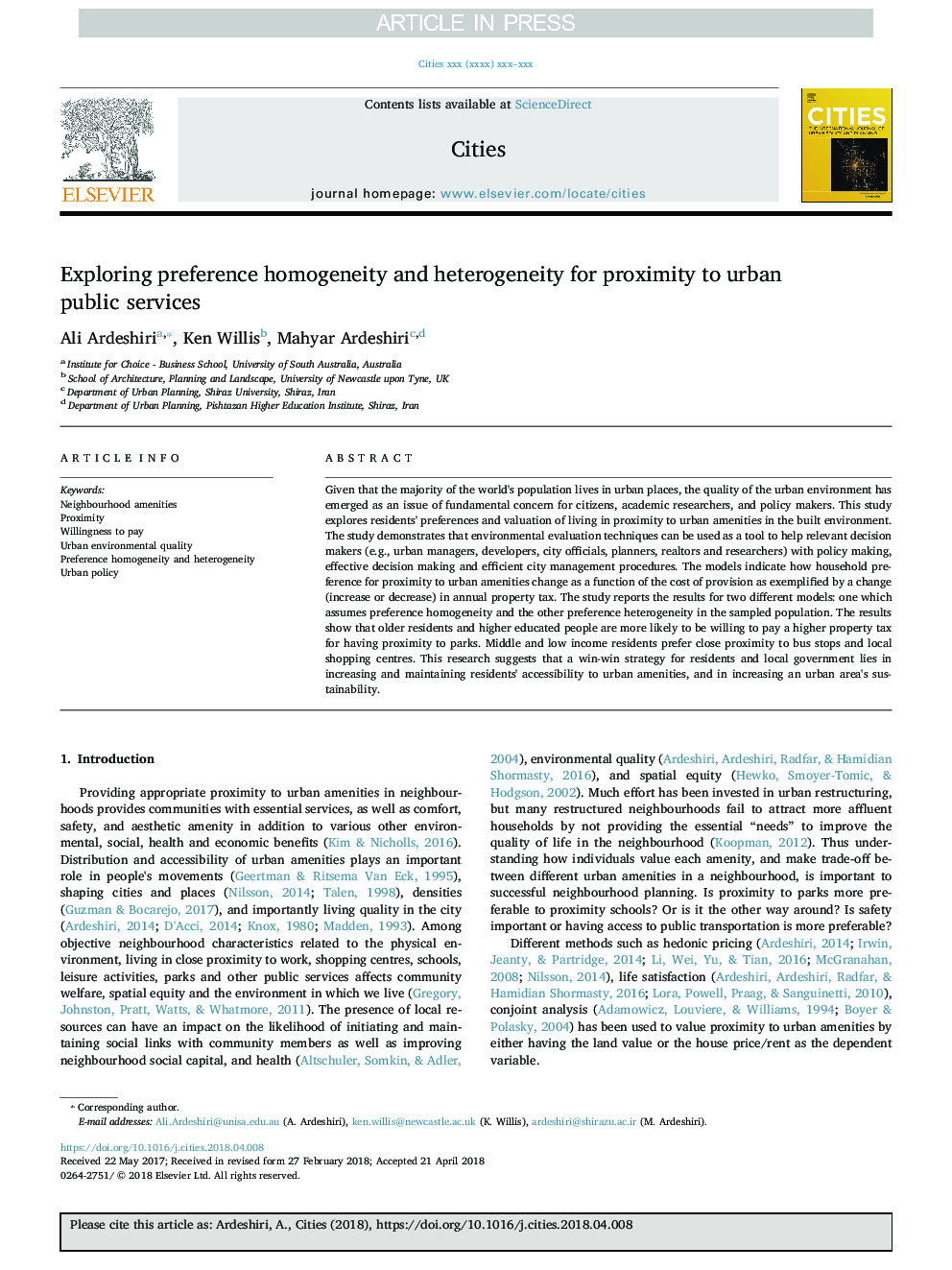| Article ID | Journal | Published Year | Pages | File Type |
|---|---|---|---|---|
| 8954668 | Cities | 2018 | 13 Pages |
Abstract
Given that the majority of the world's population lives in urban places, the quality of the urban environment has emerged as an issue of fundamental concern for citizens, academic researchers, and policy makers. This study explores residents' preferences and valuation of living in proximity to urban amenities in the built environment. The study demonstrates that environmental evaluation techniques can be used as a tool to help relevant decision makers (e.g., urban managers, developers, city officials, planners, realtors and researchers) with policy making, effective decision making and efficient city management procedures. The models indicate how household preference for proximity to urban amenities change as a function of the cost of provision as exemplified by a change (increase or decrease) in annual property tax. The study reports the results for two different models: one which assumes preference homogeneity and the other preference heterogeneity in the sampled population. The results show that older residents and higher educated people are more likely to be willing to pay a higher property tax for having proximity to parks. Middle and low income residents prefer close proximity to bus stops and local shopping centres. This research suggests that a win-win strategy for residents and local government lies in increasing and maintaining residents' accessibility to urban amenities, and in increasing an urban area's sustainability.
Related Topics
Social Sciences and Humanities
Business, Management and Accounting
Tourism, Leisure and Hospitality Management
Authors
Ali Ardeshiri, Ken Willis, Mahyar Ardeshiri,
